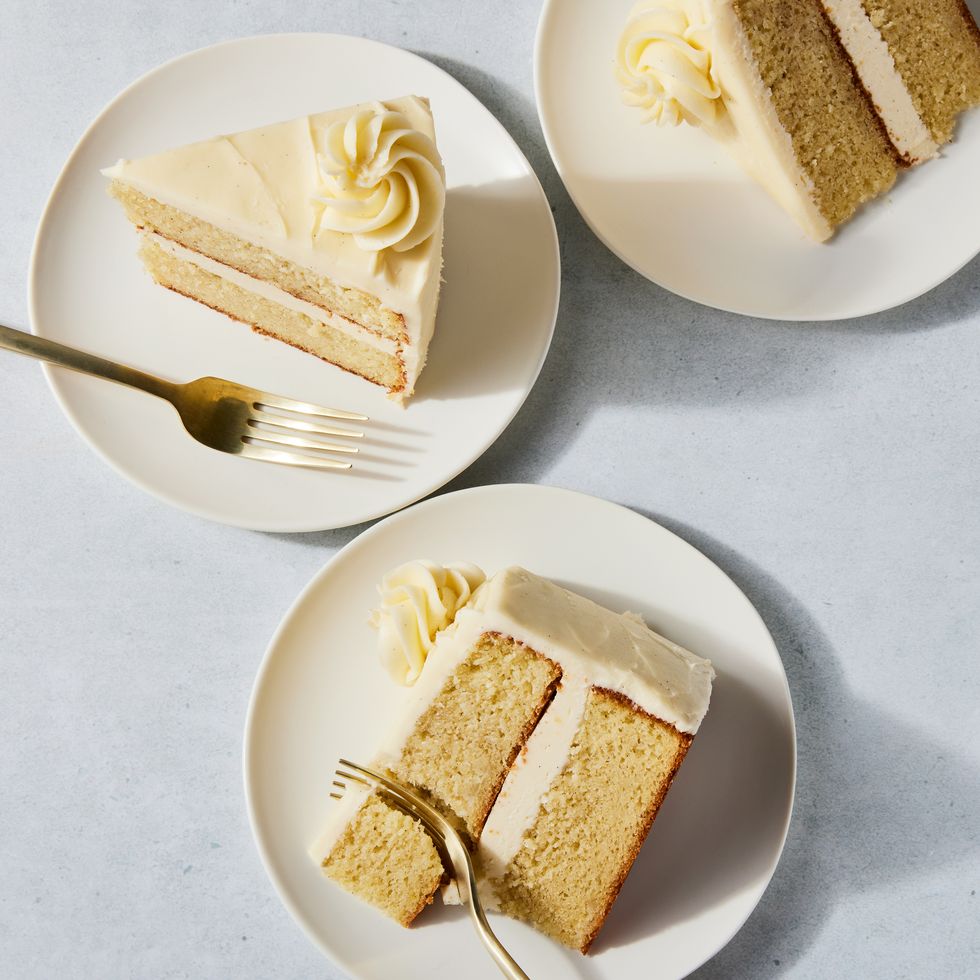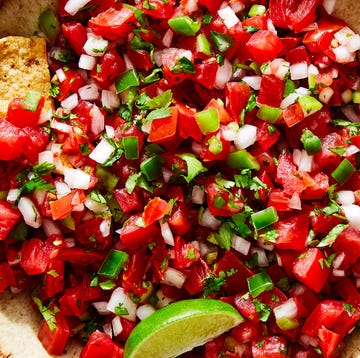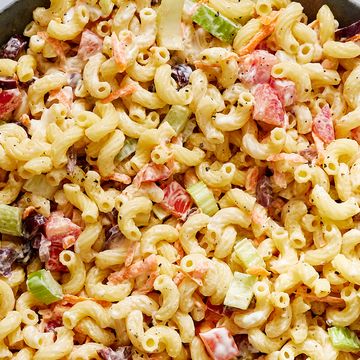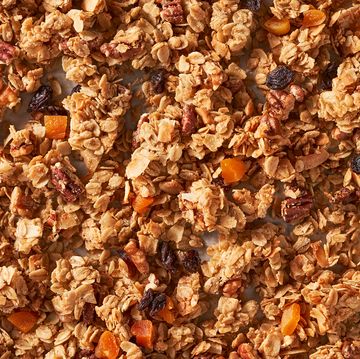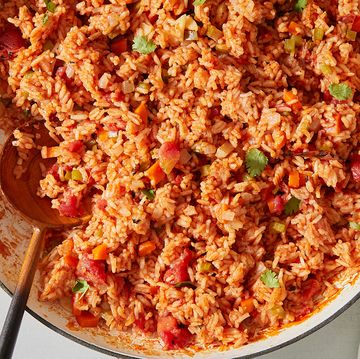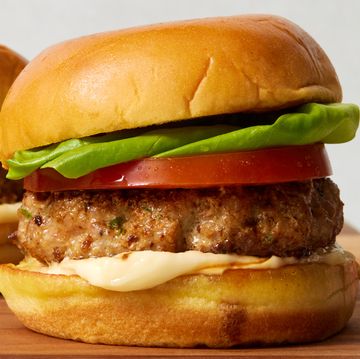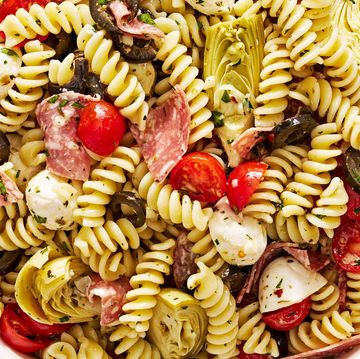
Yields:
10 - 12 serving(s)
Prep Time:
20 mins
Total Time:
3 hrs
In the birthday cake hall of fame, nestled between sun-kissed yellow cake smeared with chocolate buttercream and classic yolk-less white cake, lies perfection—vanilla cake. Full of enough vanilla bean flavor that it’s strong enough to stand on its own, but subtle enough to pair with myriad other fillings and flavors, this vanilla cake is one to have in your back pocket for any and all occasions. It’s as easy to make as it is to eat—here’s everything you need to know to get it right:
What People Are Saying:
"Delicious cake! Just the right amount of sweetness and the texture was both moist and airy. The buttercream frosting was an amazing pairing." - chefben99
“This came out sooo good! Perfect texture for someone that enjoys cakes on the luxurious side! Just the right amount of sweetness and vanilla flavor too. Would be so proud bringing this to a party!” - kim8699
How to Make Vanilla Cake
INGREDIENTS
- Oil AND Butter: I use both butter and oil in this recipe because butter is great for flavor, but oil does a much better job of adding moisture to the cake. Some cakes can turn out too dry, and you end up needing to rely on heavy frosting or extra fillings to make up for it. This cake stands up all on its own (though obviously a little frosting is great too!).
- Granulated Sugar: This is the most neutral of sweeteners, which is great for really letting the vanilla flavor here shine.
- Eggs: Here at Delish, our standard is large eggs, and I personally like to go for ones that have the best combination of qualities I look for (like cage-free, antibiotic-free, etc.) while still being in my price range. Buy which ones work best for you.
- Cake Flour: Cake flour contains less protein than regular flour, which results in a softer cake crumb and a very tender cake. We recommend seeking it out if you plan to bake more often and want the most tender cake experience. If not, follow our guide on how to make cake flour at home instead.
- Baking Powder: This is a mechanical leavener (versus the leavening that happens organically, from the eggs, or mechanically, from the creaming together of the fats and sugar) that helps contribute to the rise of the cake.
- Half-And-Half: Cake recipes need a little liquid in them to help bind the ingredients together, and dairy is an obvious option. You could just use regular milk, but I like to use half-and-half to add a little extra creaminess and depth of flavor that won’t weigh your cake down.
- Vanilla Bean Paste: Instead of using vanilla bean extract, I opted for vanilla bean paste so that you can see those little flecks of vanilla in the cake itself. It’s also usually a little cheaper than buying, say, a vanilla bean pod, but you could also just use vanilla extract if you’ve got it.
- Buttercream Frosting: This cake uses our best buttercream frosting recipe. If you're going to pipe florets on top of the cake, you'll need to make the recipe 1.5 times so there's enough to fill the center, ice the cake, and decorate it.
STEP-BY-STEP INSTRUCTIONS
Start by preheating your oven to 350°, and butter your two pans. You can also use cooking spray. Whichever you go with, make sure to line your pans with parchment paper too. Here’s how I do it: Grab a piece of parchment paper, then fold it in half over and over until you form a long pointy triangle. Measure it to the size of your cake pan by putting the point of the triangle at the center of your cake pan. Snip off the excess where it meets the side of the pan, then unfold it—it should be a circle that’s relatively the same size as your pan! A little off is okay, just make sure to hit the entirety of the bottom of the pan with your cooking spray before placing your parchment round inside and you’ll be alright. Set your pans aside, and start making your cake.
You can either use a hand mixer in a large bowl, or a stand mixer with the paddle attachment. Whichever you choose, combine your sugar and butter together and mix them together for a few minutes, or until they become light yellow, fluffy, and have doubled in size. Then add your oil, and beat until it gets even fluffier and much paler in color, about 5 minutes.
Next, add your eggs, one at a time, scraping down the sides and beating to blend between each one. There’s a good amount of eggs here, so the easiest way to do this is to crack them into a separate container (one with a lip is especially great), and then pour them in from there, rather than trying to crack them into your bowl individually. If you add two at a time, or get a little more white than yolk one time, don’t worry too much about it.
While your last eggs are mixing in, combine your cake flour and baking powder and give them a little stir to help with aeration. Add half the dry mix and ¾ cup half-and-half, then beat to just combine. Add your vanilla, salt, and the remaining dry ingredients and half-and-half, then beat all together until combined. A few lumps is okay!
Split into your two prepared pans, then pop them into your preheated oven for about 40-45 minutes, or until a cake tester or toothpick comes out with only a few crumbs attached. Let them cool for at least 20 minutes, then invert them and let them cool completely on a wire rack.
While your cake is baking/cooling, prepare your buttercream according to our recipe. If you’re not super confident with frosting a cake, check out Senior Food Editor Makinze’s TikTok on how to do it—she’s got some great tips. Basically, once your cake is cool, you can use a spatula to spread half of frosting on top of one cake. Place second cake on top (inverting it so the flat bottom is on top can help here). Ice the top and sides of cake with remaining frosting (I find a cake stand to be particularly useful here, but you can also spin a plate) and pipe florets on top, if desired.
Full list of ingredients and directions can be found in the recipe below.
Recipe Tips
The greatest way to assure your cake will turn out great is to make sure your butter, eggs, and half-and-half are all at room temperature when you add them in. If one or more ingredients is too cold, the batter will break or separate. You should be able to create a firm indent in your butter with your thumb—if you can't, you can try microwaving it for 5 second intervals. If your eggs are cold, place them in hot water from the tap for 5 to 10 minutes. If your half-and-half is cold, heat in the microwave or on the stove to 75° or 80° before adding to the batter.
Storage
The cake, minus the frosting, can be stored at room temperature for up to 5 days. An iced vanilla cake should be placed in an airtight container and stored in the refrigerator for up to 1 week. Remove the cake from the fridge and allow it to come to room temperature before serving. Want to make the cake in advance? Wrap in plastic wrap and freeze for up to 2 weeks.
Advertisement - Continue Reading Below
Ingredients
- 6 Tbsp.
unsalted butter, room temperature, plus more for pans
- 1 cup
(200 g.) granulated sugar
- 3/4 cup
vegetable oil
- 6
large eggs, room temperature
- 3 cups
(360 g.) cake flour
- 1 Tbsp.
plus 1 1/2 tsp. baking powder
- 1 1/2 cups
half-and-half, divided
- 2 Tbsp.
vanilla bean paste
- 1 tsp.
kosher salt
Buttercream frosting, for decorating
Directions
- Step 1Preheat oven to 350° and butter 2 (8") round pans. Line bottoms of pans with parchment.
- Step 2In a large bowl, using a handheld mixer on medium-high speed (or in the large bowl of a stand mixer fitted with the paddle attachment), beat granulated sugar and butter until doubled in size, about 3 minutes. Add oil and beat until fluffy, white, and smooth, about 5 minutes.
- Step 3Reduce mixer speed to low. Add eggs, one at a time, beating to blend and scraping sides of bowl after each addition, until incorporated.
- Step 4In a medium bowl, whisk flour and baking powder until well combined, about 1 minute (this is to avoid sifting). Add half of dry ingredients and 3/4 cup half-and-half and beat on medium-low speed until batter is moist (it’s okay if there are some lumps). Add vanilla paste, salt, and remaining dry ingredients and 3/4 cup half-and-half and beat just until combined (the batter will still have a few lumps).
- Step 5Divide batter between prepared pans. Bake cake until golden brown and a tester inserted into the center comes with a few moist crumbs attached, 40 to 45 minutes.
- Step 6Let cool in pan 20 minutes. Invert onto a wire rack and let cool completely.
- Step 7Using a serrated knife, trim domed top of cakes to flatten, if desired. Using an offset spatula, spread half of frosting on top of one cake. Place second cake on top. Ice top and sides of cake with remaining frosting and pipe florets on top, if desired.
Advertisement - Continue Reading Below
Advertisement - Continue Reading Below
Advertisement - Continue Reading Below









